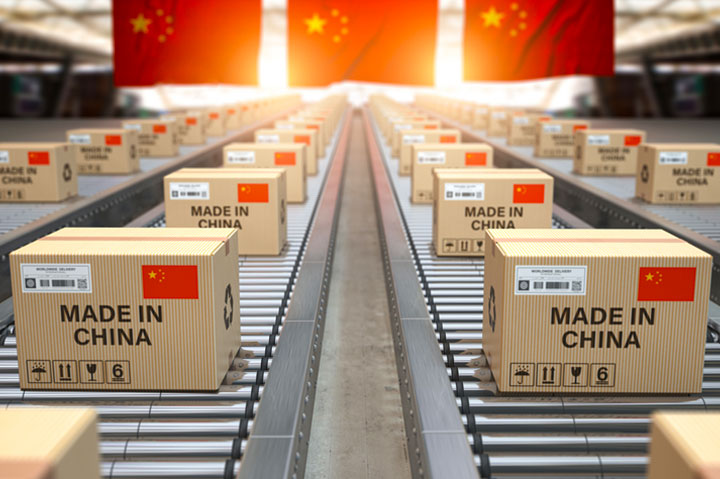September 30, 2021
China’s Manufacturing Sector Contracted in September
The domestic promo industry is heavily reliant on China-based manufacturers to produce products sold here.
The manufacturing sector in China is in retreat.
The nation’s official manufacturing Purchasing Manager’s Index was 49.6 for September, according to new data from the National Bureau of Statistics (NBS). The tally was down from 50.1 in August. Readings below 50 denote contraction.

The news is relevant for the North American promotional products industry, as the majority of promo items sold here are produced in China. Disruptions/slowdowns to manufacturing activity in China can make it more difficult and expensive for domestic companies to efficiently source adequate quantities of products for stocking and sale in the U.S. and Canada.
Word on China’s manufacturing slowdown comes as the promo industry enters the fourth quarter holiday gifting season, traditionally the industry’s busiest time of the year.
The Q4 crunch for the #promoproducts industry officially begins Friday. What can distributors expect when it comes to inventory, customer service & production/delivery times? Answers here: https://t.co/xzfULp8819 @Tim_Andrews_ASI @ASI_AndyCohen @ASI_MBell @Melissa_ASI
— Chris Ruvo (@ChrisR_ASI) September 30, 2021
Those eager for a bright side might take some heart in this: While the official NBS showed Chinese manufacturing to be in contraction, a separate private industry survey indicated that the sector didn’t expand or contract.
The Caixin/Markit Manufacturing Purchasing Managers’ Index was spot-on 50 for September, a marginal uptick from 49.2 the month before. The survey, which focuses on small manufacturers and export-oriented businesses, also uses 50 as the demarcation line between expansion and contraction.
Nonetheless, the official NBS survey showed contraction for the first time since February 2020, when the government instituted widespread societal shutdowns to curb coronavirus spread.
Electricity rationing/power shortages, localized societal lockdowns related to COVID-19 outbreaks, rising raw material costs and competition for those materials, labor issues, and production backups all conspired to drive Chinese manufacturing into contraction.
“In September, due to factors such as low volumes of business at high energy-consuming industries, the manufacturing PMI fell below the critical point,” said Zhao Qinghe, a senior NBS statistician, in a statement. “The two indexes of high energy-consuming industries ... are both lower than 45.0, indicating a significant drop in supply and demand.”
Power shortages in #China are disrupting Chinese manufacturing & there are already impacts for the #promoproducts industry. https://t.co/tnw23Tu1iI @ASI_MBell @Melissa_ASI @asicentral
— Chris Ruvo (@ChrisR_ASI) September 27, 2021
Recent COVID outbreaks in China are reportedly receding, which could help relieve one of the pressure points on Chinese manufacturers. Still, issues like electricity shortfalls and raw material challenges don’t show signs of abating immediately, and could continue to potentially hinder productivity and growth, analysts said.